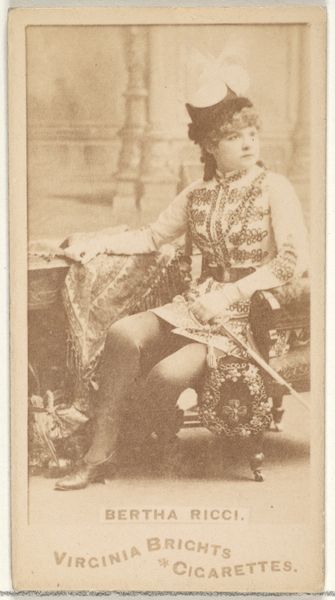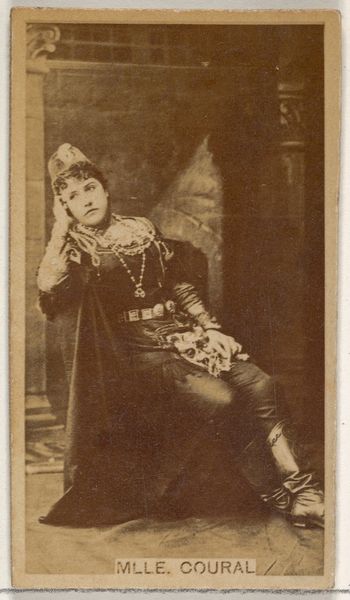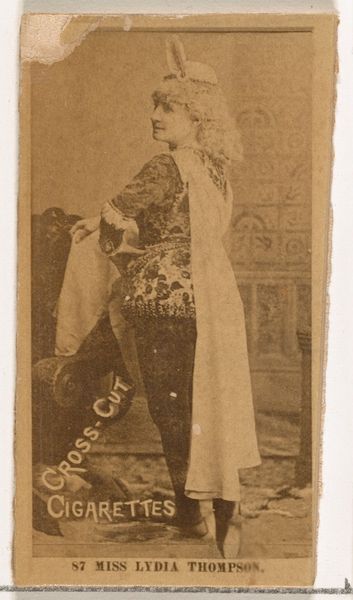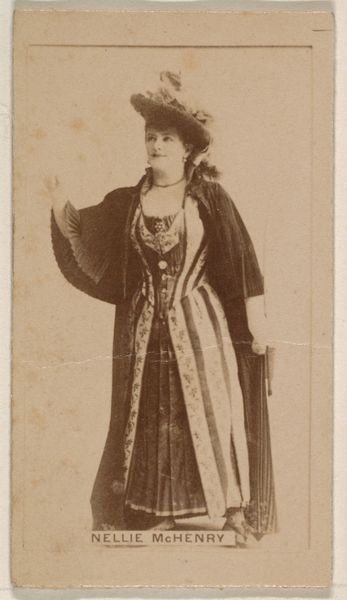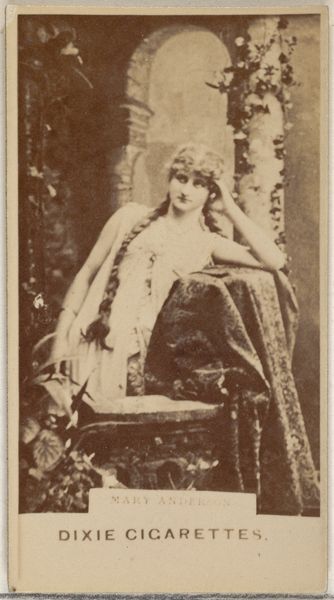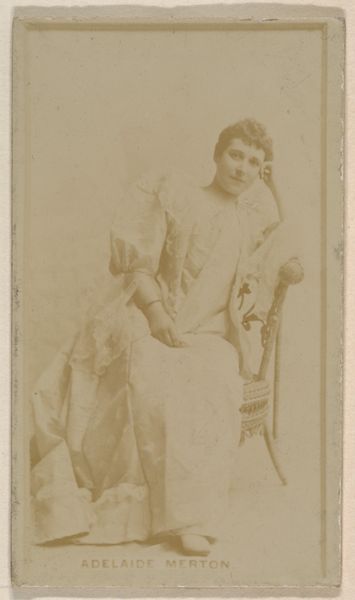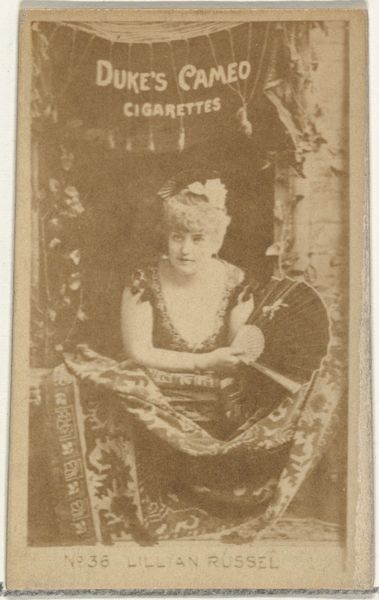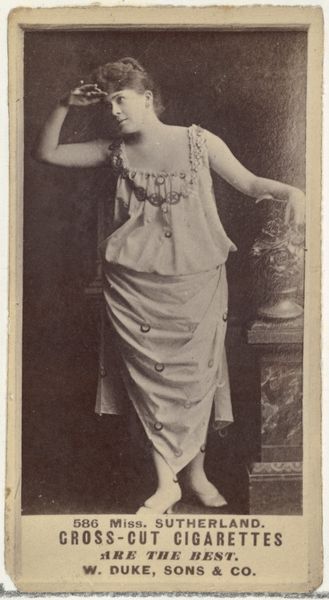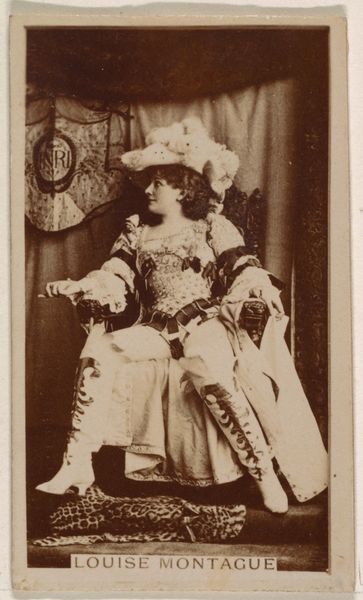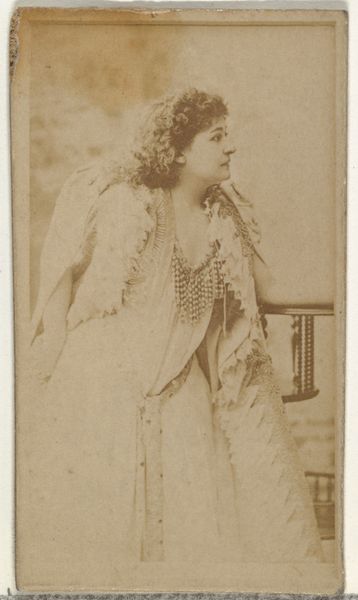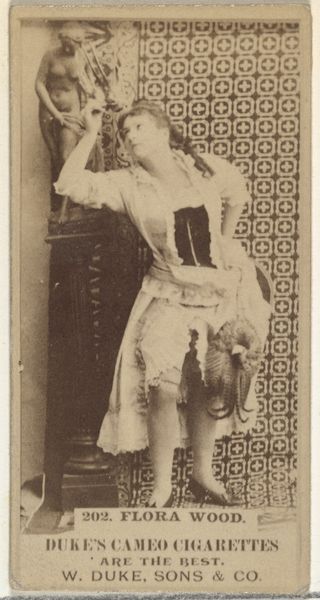
photography, gelatin-silver-print
#
portrait
#
16_19th-century
#
pictorialism
#
photography
#
historical photography
#
gelatin-silver-print
#
19th century
Dimensions: height 95 mm, width 66 mm
Copyright: Rijks Museum: Open Domain
Curator: What immediately strikes me is the deliberate tonal ambiguity, creating a liminal space between portraiture and pure composition. Editor: Indeed. The portrait we are considering is titled "Portret van Julie Feyghine," and it’s dated to 1881. As a gelatin silver print, it gives us a clear window into the aesthetic sensibilities of its era. The softness indicates Pictorialism at play. Curator: The figure’s pose is captivating; look at how she leans casually against the ornately carved chair. It forms an interplay between figure and the form. And the choice to dress her in what looks to be middle eastern attire, emphasizes exoticism through form. The soft light is really carefully controlled to create a sense of visual unity. Editor: Placing Julie within the context of 19th-century photography allows us to see this as a highly staged piece that offers both intimate glimpses and projects broader colonial fantasies. She is a middle class, well dressed women, embodying roles that would allow for the imagination of different historical roles within this period. The composition is also evocative because you can see other family member's portrait in the photograph, it’s a slice of life moment frozen in time. Curator: Her attire contributes heavily to this ambiguity. Is she acting in costume or an example of "Orientalist" portrayals common during this period? This question reflects tension inherent in image and form: The gaze is present but directed just off to the side, allowing the subject and artist equal access within pictorial space. Editor: Right. Photography in the 19th century gained its cultural and societal power precisely because its ability to capture lifelike figures that seemed honest in the process of portraying. But how true that image is up to us to figure out now. Curator: And that dance of perception transforms “Portret van Julie Feyghine” into an intersection. An interplay of forms, socio-political statements and aesthetic ideas from over a century ago. Editor: A rich dialogue, then, between artistic choices and societal influences. An intimate encounter between subject, photographer, viewer and broader social and political movements, where historical narratives both come to life and raise so many new and rich questions about who we were then and who we are today.
Comments
No comments
Be the first to comment and join the conversation on the ultimate creative platform.
